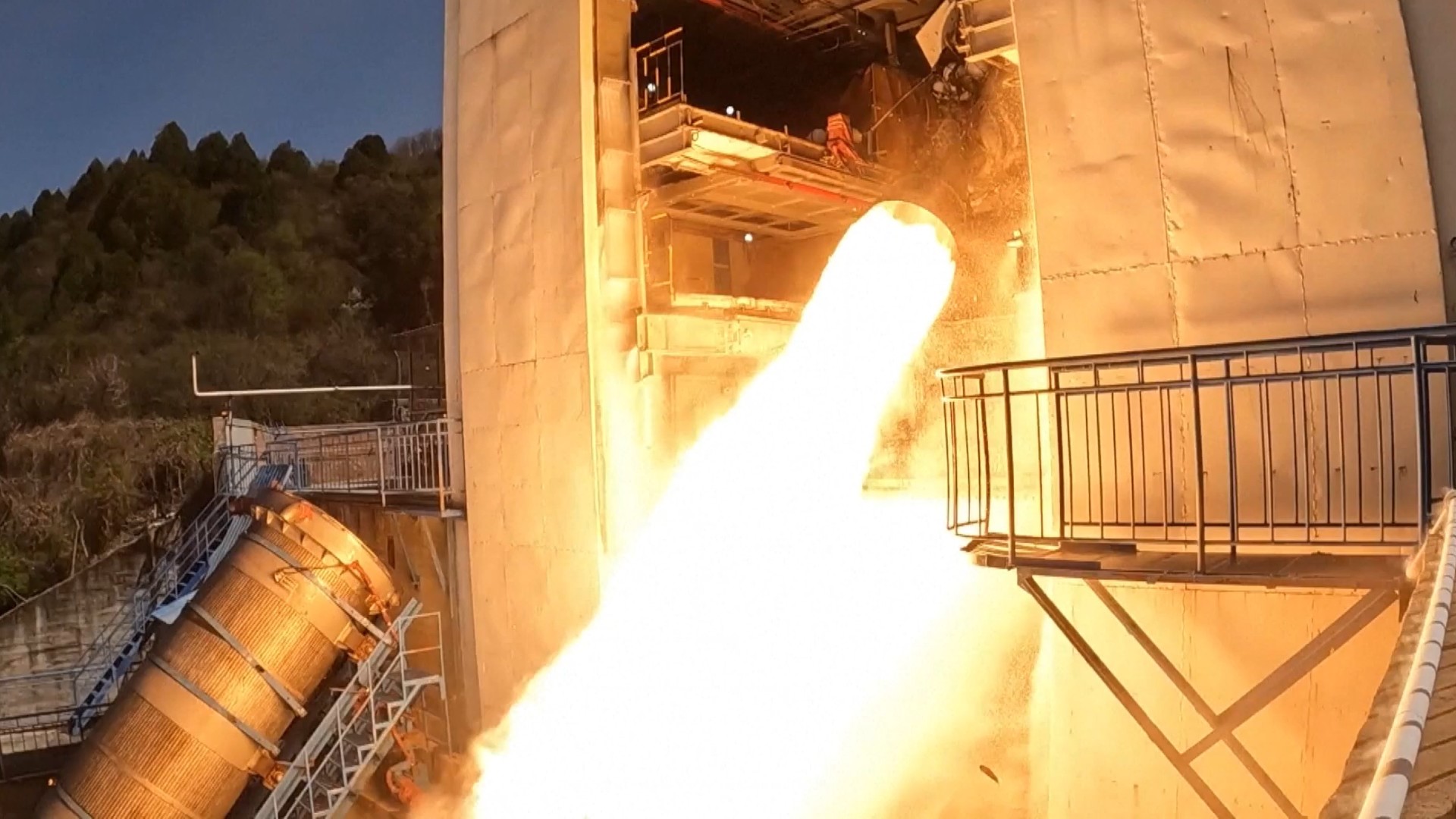
China has made progress on a powerful rocket engine to power its new reusable rockets.
A 130-ton-thrust, reusable kerosene-liquid oxygen engine aced a pair of consecutive ground ignition tests on Sunday (April 14). This means the engine — key to the development of the nation's new, reusable rockets — has now passed 15 repeated tests, 30 ignition starts, and more than 3,900 seconds cumulative hot fire testing, according to Global Times.
The tests were conducted near Xi'an in Shaanxi province in north China by the Academy of Aerospace Propulsion Technology (AAPT) under the China Aerospace Science and Technology Corporation (CASC), a giant state-owned enterprise and the country's main space contractor.
Related: China plans to catch its reusable rockets with constricting wires (video)
The engine, which builds on the YF-100 engine developed for and used on China's Long March 5, 6, 7 and 8 rockets, has multiple-start and variable thrust capability.
"The key characteristic of the reusable engine is safety and reliability, which can meet relevant requirements. We ran so many tests mainly to find out the state of the engine in these tests," Zhou Xianqi, a researcher with AAPT, told CCTV.

The new engine is expected to power the Long March 10: A new rocket for human spaceflight, including future crewed missions to the moon. A first test flight of the rocket could come as soon as next year, and thus the latest test milestone is a big boost to China's plans, including putting its astronauts on the moon before 2030.
The restartable, variable thrust engine will allow Long March rockets to control their return to Earth and their descent. But instead of using landing legs like the SpaceX Falcon 9, the rocket first stages will be caught by a grid of constricting wires.







